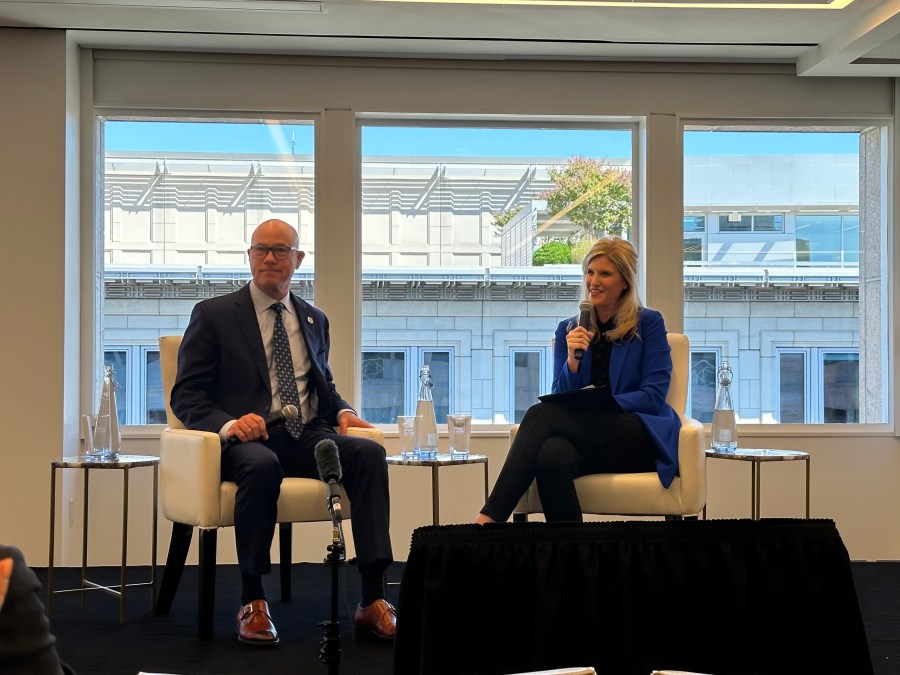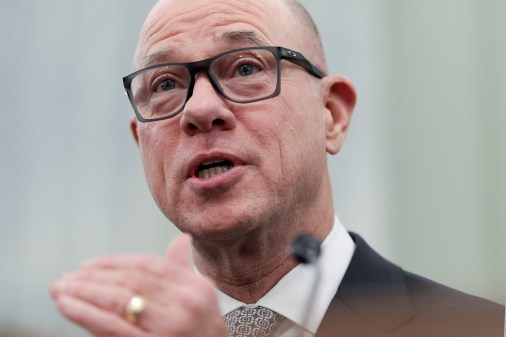FAA administrator calls out ‘obsolescence’ in air traffic control technology

Bryan Bedford, the new administrator of the Federal Aviation Administration, emphasized the need to modernize aging air traffic control technology in some of his first public remarks since his swearing in, saying the country’s current system is “failing every day.”
In comments during a fireside chat before the Commercial Drone Alliance on Monday, Bedford said the failures include circuits breaking, lines getting cut up, copper wire spraying, and switches that no longer work and can’t be manufactured.
“There’s just all this obsolescence built into the system, and it feels like we finally have a consensus across users, government, other interested parties, and certainly the American public that want to see it fixed,” Bedford said.
Bedford’s comments come just a few days after the FAA officially began its search to hire an integrator to modernize its antiquated air traffic control system. Issues within that important system have been the focus of congressional hearings and watchdog reports. At a House Transportation Committee hearing earlier this year, for example, witnesses noted that the agency was still using floppy disks in some instances.
During the fireside chat moderated by Lisa Ellman, CDA’s chief executive, Bedford said the National Airspace System (NAS) is a “critical resource for the country.” It contributes roughly 5% to 6% of the country’s gross domestic product via commercial airlines, cargo, launch vehicles and others, he said.
“And yet, it is an analog creature,” Bedford said. While he noted that the FAA produces data that’s then used by industry to make “wonderful” tools, the agency has room for improvements.
“The FAA and the NAS iterate about on the same cycle that Boeing and Airbus iterate. We iterate on about a decade-long cycle, and we need to move to more of an iPad iteration,” Bedford said. “We need to move more on sort of an annual speed of modernization.”
To achieve that, the agency has to become digital, though he said that the process is “easier said than done.” When making the move from roughly 4,500 analog facilities to fewer all digital facilities, the agency has to be mindful not to break anything in the critical system.
“That’s why we decided to hire an integrator to help us look at parts of stress within the system that we can accelerate smartly, and other places where we need to be a little bit more thoughtful and want the support of the third party just making sure we get it right,” Bedford said.
Responses to the agency’s solicitation for an integrator are due Sept. 21.
Before his nomination by President Donald Trump to be FAA administrator, Bedford was CEO of Republic Airways and spent his career in the aviation sector. He was confirmed mostly along party lines in July.
The beginning of Bedford’s tenure at the FAA comes at a point of increased scrutiny of air traffic. A January mid-air collision of an American Airlines flight and an Army helicopter over the Potomac River in Washington that killed 67 people prompted concerns about airplane safety.
While Trump immediately placed blame on the FAA and its air traffic control system, a National Transportation Safety Board investigation into the crash is still ongoing.
FAA drone rule
In addition to comments on system modernization, Bedford also addressed a recent FAA proposed rule to create a regulatory framework for the use of drones for things like package delivery, aerial surveying, recreation and flight testing.
That anticipated proposed rule, which has been years in the making, was the primary topic of the CDA event. Comments on the proposal are open until Oct. 6.
Bedford described the current draft as “an amalgamation” of a lengthy process. While the drone industry has “moved past where this rule is,” he said the administration wants to “get a marker in the ground” and “start moving.” As a result, the current process for the proposed rule is the result of “breaking some glass internally” and running some of the agency’s normal rulemaking processes in parallel, he said.
“So instead of seeing a seamless rule, you see a sort of schizophrenic rule that includes a rulemaking on security as well as a rulemaking on commerce,” Bedford said.
Addressing the audience, he said the FAA needs industry to comment, and that there wouldn’t be an extension for responses. Bedford added: “Perfect is the enemy of the good. Let’s try to get a good rule out, and let’s get it out quickly. And then we can iterate from there.”
White House Office of Science and Technology Policy Director Michael Kratsios also spoke at the event and addressed the drone rule, calling it “critical to unleashing this technology.”
Kratsios pointed to the cumbersome process of waivers the drone industry has had to navigate to operate, and said the proposed regulation is “finally an opportunity” to set up a process in regulation. “This can unlock so many things, from pipeline inspections, to delivery, to health-related use cases,” he said.
But more important, he said, is that the administration gets the rule right. “We don’t want to ever be in a scenario where we have to rewrite it or amend it or do it again. So what we do today is so important,” Kratsios said.






